13 Hidden Revolution in Data Science


Introduction
Data Science is revolutionizing the way we look at data and process information. This revolutionary concept has brought about immense evolution and benefits to an array of industries. The applications of Data Science are endless, ranging from natural language processing and prediction models to healthcare analytics. With a combination of new technologies, tools, and algorithms, Data Science has propelled a hidden revolution that will continue to shape the future of data driven innovations.
You may be wondering what Data Science is actually capable of achieving. In short, it depends on which industry you’re looking at. From customer segmentation optimization in retail to smart Cities projects that improve urban traffic patterns, the possibilities are endless. Data Science is also being used in finance to create personalized financial advice or in agriculture to drive crop yields higher with machine learning algorithms.
No matter how you look at it, the power behind this revolutionary technology can’t be denied. We are now able to generate insights from large datasets that were previously impossible for humans alone to achieve using traditional methods; this allows us to more quickly realize decisions with greater confidence and accuracy. Moreover, predictive analytics allow companies and organizations to optimize their decision making process with realtime results; this allows them to keep up with current trends and understand customers’ behavior better than ever before.
The bottom line is that the advancements made in Data Science have enabled us to make better decisions faster than ever before allowing us access to knowledge previously impossible for us alone as humans! This “hidden revolution” has already begun impacting everyday life. Here’s hoping we see larger leaps forward in terms of technology as we continue down this path. Data Science Course in Delhi
Data Science on the Rise
The rise in popularity of DS is without a doubt, a hidden revolution that has occurred in recent years. AI (Artificial Intelligence) and Machine Learning play a key role in driving this change – they give machines the ability to identify patterns in data and make predictions based on these results. This allows companies to forecast potential outcomes and trends that could have a big impact on their operations. The use of DS for predictive analytics can also help automate tedious processes such as account reconciliation or customer segmentation, freeing up resources for more important duties.
Aside from streamlining processes, DS can provide great benefits for businesses that choose to adopt it as part of their operations. These include increased accuracy by eliminating human errors, improved decision making through data analysis, greater customer satisfaction from personalized experiences and enhanced operational efficiency due to machine driven automation. All these advantages add up to create a competitive edge for organizations who use DS correctly across different areas of operation such as customer service, product development or market research.
It’s clear that the “hidden revolution” of Data Science is here – it has been quickly embraced by businesses worldwide and its popularity isn’t likely to slow down any time soon! Companies who understand how vital this technology is must embrace it now in order to stay ahead of their competition and reap its rewards which includes cost savings.
Automation and Artificial Intelligence
- Automation: Automation involves the use of robotic systems to carry out operations with minimal human input. This technology can help companies free up resources (including time and money) by allowing them to automate mundane tasks, such as data entry or inventory maintenance.
- Robotics: Robotics is a branch of AI that focuses on creating computerized systems that can interact with their environment. Robotic processes can be used to replace traditional labor in many different industries, from manufacturing to healthcare, making them a key part of automating and improving processes. Data Analyst Course in Delhi
3 Data Science: Data science is a field of study focused on using various techniques to process large sets of data in order to uncover helpful insights and trends. The insights gained from this process can then be used by business leaders in order to make more informed decisions about their operations.
4 AI & ML Algorithms: Artificial Intelligence (AI) & Machine Learning (ML) algorithms are computer generated models that can identify patterns from large amounts of data more efficiently than humans ever could. These models are used in a wide variety of applications ranging from digital customer service agents to autonomous vehicles.
Recent Advances in Machine Learning
Automation has long been a part of business operations and recently, AIpowered machines have taken it to the next level. Many tedious processes which were previously handled manually can now be completed with the help of automated machines powered by algorithms. Artificial intelligence is also being used to bring greater accuracy and speed to complex tasks, giving businesses the ability to move faster than ever before.
Machine learning is taking automation further than ever before by allowing machines to learn from data sets, develop sophisticated models and carry out a series of predictive analytics operations that are tailored specifically for each business’s needs. Algorithms can be used to analyze large amounts of data and spot patterns that could not otherwise be detected with manual analysis. As such, machine learning presents a powerful capability for any business looking to stay competitive in today’s dynamic market.
Big data is at the heart of modern machine learning solutions as it enables algorithms to process massive data sets quickly and accurately while staying updated on customer preferences and trends. Natural language processing (NLP) is another powerful tool that helps machines understand spoken language more effectively than humans so they can complete tasks with greater precision and accuracy. Image recognition technology allows machines to recognize objects in images or videos with minimal human oversight and neural networks enable machines to replicate human intelligence outperforming traditional computer processes by leaps and bounds.
Big Data Analytics
Data Collection is the first step in the big data analytics process. This involves collecting large amounts of structured and unstructured data from various sources such as customer interactions, website visits, transactions, and social media engagements. This data can then be stored in an organized database for further processing.
Once the data has been collected and stored, it is then ready to be processed into meaningful insights. Data Processing involves transforming raw data into useful information through techniques such as cleaning, organizing, filtering, and analysis. Machine Learning techniques are used during this stage as algorithms detect patterns within raw data sets which allow for more accurate predictions of future outcomes.
Artificial Intelligence (AI) is then used to automate certain processes by using predictive analytics to interpret information quickly and accurately. AI technology can also help create visualizations of complex datasets which allows for deeper analysis of trends within large data sets. Automated processes such as clustering algorithms can also be run to detect underlying patterns which may otherwise have gone unnoticed manually.
Big Data Analytics is revolutionizing the way businesses operate today by providing accurate insights that might previously have gone unnoticed or unexplored. Through proper understanding and implementation of these techniques your organization can gain a competitive advantage over its rivals in order to effectively compete in today’s market environment. By unlocking the hidden potential of Big Data Analytics. Data Science Institute in Delhi
Cloud Computing
Cloud computing enables businesses to store their data “in the cloud” across multiple distributed servers. These servers are maintained by third party providers like Amazon Web Services (AWS), reducing the need for physical onsite storage space. The cloud also provides access to powerful computing resources which can quickly process large amounts of data, providing insights that weren’t possible before. Additionally, your data is accessible from any device in real time, allowing you to monitor operations even when you’re away from the office.
When it comes to storing sensitive information in the cloud, security is of utmost importance. That’s why leading providers like AWS employ encryption technologies and policies that are designed to keep your data safe while it’s stored in their systems. With this layer of protection in place, your data will be secure while it’s being processed in the cloud. This means that you can trust your provider and rest assured that your business will remain compliant with industry regulations.
Cloud computing promises a future where big data insights are just a few clicks away — no matter where you are in the world or what size business you belong to. With lower costs, improved computing power and real time access to your data — it’s easy to see why more and more companies are turning to cloud technology for their storage needs. By taking advantage of these 13 hidden revolutions.
Natural Language Processing
It allows computers to understand human language and can be used to automate various tasks, such as text analysis and machine learning. This system uses algorithms for languages that are able to recognize grammar and syntax, allowing it to understand how words relate to each other within the context of a sentence.
NLP relies heavily on Computational Linguistics, which is an interdisciplinary field that combines computer science and linguistics to give computers a better understanding of natural languages like English or Spanish. With this understanding, computers are able to make decisions based on the inputted data such as search queries or voice commands.
NLP also helps drive automated language processing systems by giving machines the ability to identify specific words or phrases within texts and respond accordingly. For example, chatbots utilize NLP technology in order to respond accurately when presented with certain keywords or questions from users. It also helps with automated tasks such as information extraction or sentiment analysis which are used in various applications like customer service or automated response systems.
Overall, Natural Language Processing is a powerful tool that enables humans and machines alike to better understand natural languages like English and Spanish which can further improve automated responses, text analysis tasks and more. As this field continues to develop over time, we will likely see more automation of tasks being handled by machines that were once done manually.
Reinforcement Learning
Put simply, reinforcement learning is an AI/ML technique used in unsupervised learning that allows algorithms to continually adjust their parameters based on a scalable reward system. While supervised learning has rules that accurately evaluate data to reach desired outcomes, unsupervised learning focuses on environment interaction and making sense of trends within it.
Reinforcement learning works by creating an artificial agent or neural network whose purpose is to interact with its environment in order to maximize rewards or minimize punishment. The environment provides input that the agent needs in order to learn how it should behave. Over time, the agent learns which behaviors lead it closer towards its goals while avoiding wrong choices which could have negative consequences (punishment).
A major benefit of employing reinforcement learning is its versatility: models can be adjusted easily as needed due to their scalability and focus on dynamic environments. Additionally, its use of neural networks makes it more efficient than other algorithms; its ability to quickly process data makes it ideal for applications where speed is key. Finally, reinforcement learning does not require too much labeled data—it can infer patterns from previous observations without needing human assigned labels (unsupervised).
The Open Source Movement
Moreover, open source software is characterized by its transparent and community driven development process. All contributors have visibility into how the software is developed, allowing them to make meaningful contributions that benefit the entire community. This amplifies the collaborative aspect of open source development, as its trustworthiness encourages more people to join in.
One example of a successful open source project is Linux, which has become one of the most widely used operating systems in the world. It started out as an experiment among computer programmers in 1991 who wanted to see if they could create a free operating system alternative to expensive proprietary options like Microsoft Windows. Now it powers nearly all smartphones, tablets, and servers used by major organizations around the world – something that would have been unimaginable before it first came into existence.
As Linux’s success demonstrates, open source projects are powerful tools for collaboration and innovation in the digital age – tools that anyone can use and contribute to without needing special permission or resources. The 13 Hidden Revolution in Data Science shows how these emerging technologies are creating new opportunities for everyone involved in data science – from data engineers to scientists – to come together and advance their research projects faster than ever before.
The Growing Need for Data Scientists Section
Deep learning is a branch of machine learning that is used in the development of AI algorithms, allowing data scientists to create powerful programs that can analyze vast amounts of data. The applications of deep learning have grown significantly in recent years, making it essential to ensure that AI programs perform with accuracy, reliability, and security. With deep learning and AI’s ability to process large amounts of data quickly, companies are now able to access near real time insights on customer behavior, allowing them to make smarter decisions faster.
The use cases for data science are also growing across business applications such as healthcare and finance. In healthcare, deep learning can be used in medical imaging tools and diagnostics software to help detect diseases earlier or detect signs of disease before symptoms appear. In finance, deep learning can be utilized by banks to streamline fraud detection processes or investment firms when searching for profitable ventures. Data science is also being used in autonomous driving systems like driverless cars or making predictions about the housing market that could inform purchasing decisions.
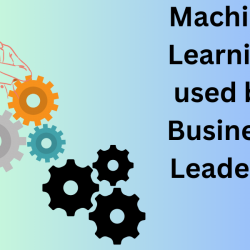
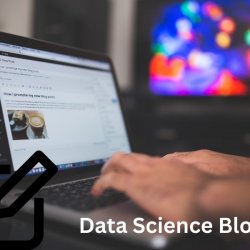
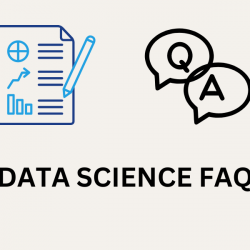
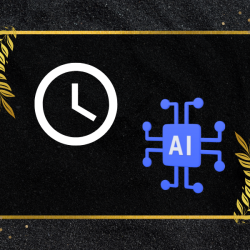
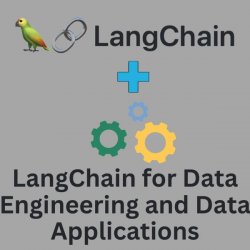
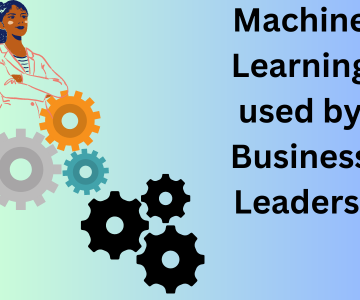
Ingen kommentarer endnu